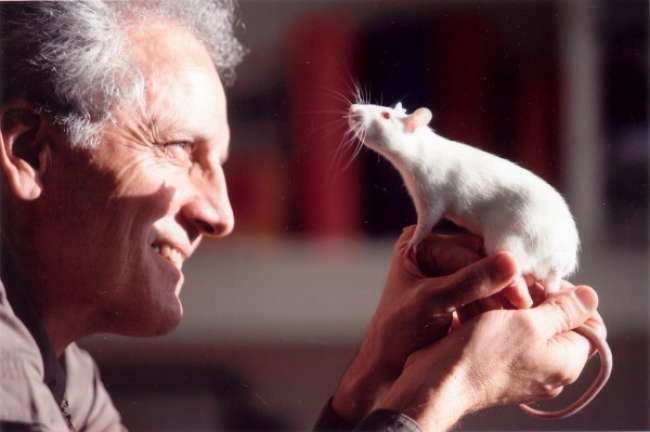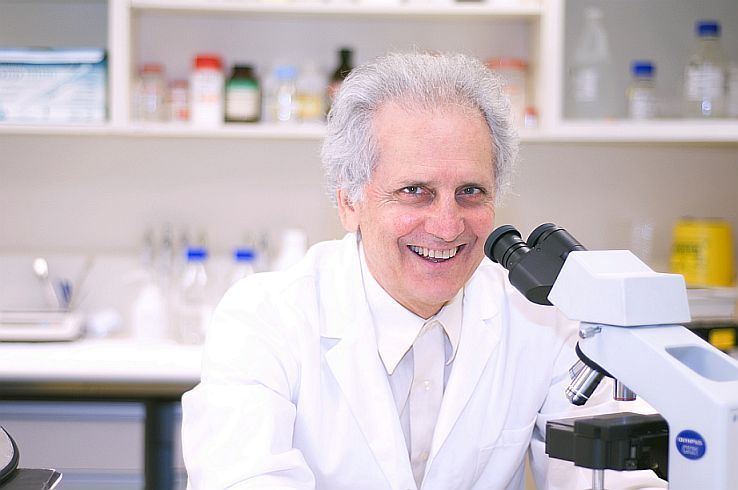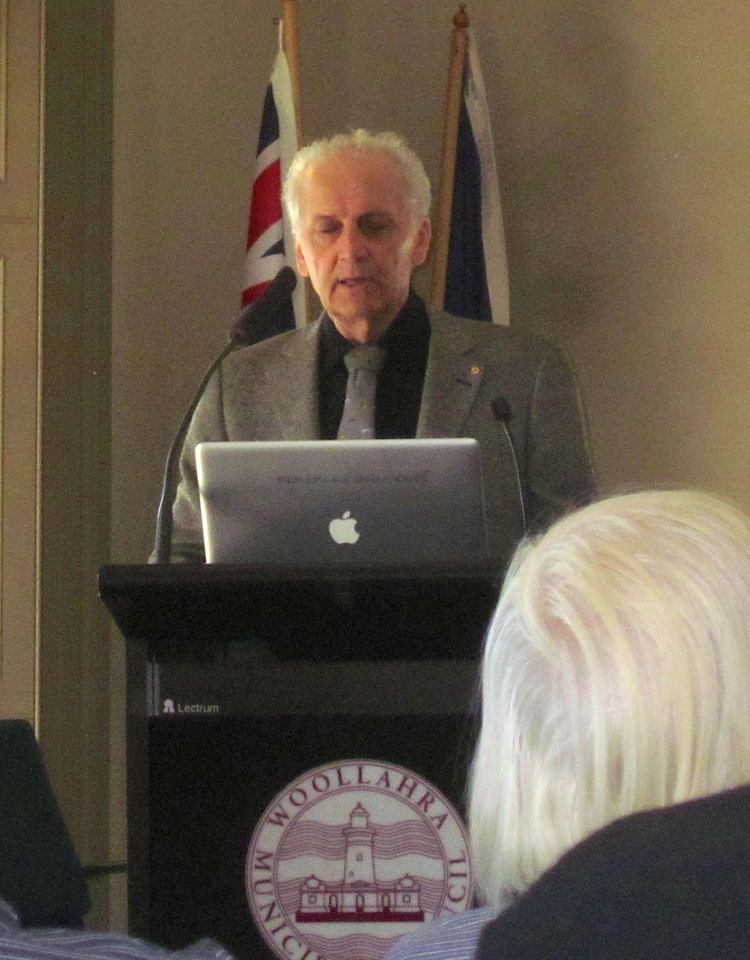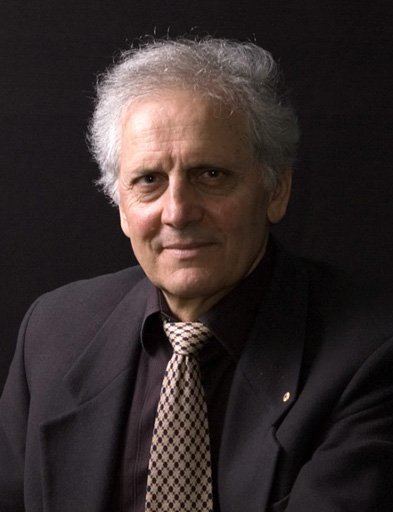Children Alexi and Yvette | Name George Paxinos | |
 | ||
Notable awards The Award for Excellence in Publishing in Medical Science from the Association of American Publishers (1997)FASAA (1999)Order of Australia (2002)Humboldt Research Award (2003)President of the Australian Neuroscience Society (2004)President IBRO World Congress of Neuroscience (2004–2007) Books The Rat Brain in Stereotax, The Mouse Brain in Stereotax, Paxinos and Franklin's, The Brain: An Introducti, Atlas of the Spinal Cord of th | ||
Genedis 2014 prof george paxinos
George Paxinos AO FASSA FAA (b. 6 December 1944) is a Greek Australian neuroscientist, born in Ithaca, Greece. He completed his BA in psychology at the University of California at Berkeley and his PhD at McGill University in Montreal, Canada. After a postdoctoral year at Yale University, he moved to the School of Psychology of the University of New South Wales in Sydney, Australia. He is currently an NHMRC Senior Principal Research Fellow at Neuroscience Research Australia and Scientia Professor of Psychology and Medical Sciences at the University of New South Wales.
Contents
- Genedis 2014 prof george paxinos
- Neuroscientist professor george paxinos defends atheists who love life
- Research
- Impact
- Citation record and grant support
- Editorial boards of international refereed journals
- Contribution to teaching
- Professional service
- Community service
- Honours and awards
- Nina Kondelos Prize
- References

He is a fellow of the Australian Academy of Science and the Royal Society of New South Wales, and a corresponding member of the Academy of Athens.

He has two children, Alexi and Yvette.

Neuroscientist professor george paxinos defends atheists who love life
Research

Paxinos has published 46 research books, 145 refereed journal articles, 30 book chapters, and 17 CDROMs. He has identified 90 nuclei (areas) in the rat and human brains. Comparing rats and humans, he has identified 61 homologous nuclei. He has identified 180 nuclei and homologies in birds. He was the first to produce a reliable stereotaxic space for the brain of rats, mice, and primates — a factor fueling the explosion in neuroscience research since the 1980s. He developed the first comprehensive nomenclature and ontology for the brain, covering humans, birds, and developing mammals.
Impact

Most scientists working on the relation between the human brain and neurologic or psychiatric diseases (or animal models of these diseases) use Paxinos's maps and concepts of brain organisation. His human brain atlases are the most accurate available for identification of deep structures and are used in surgical theatres.
Citation record and grant support

In the field of neuroscience, he is the author of the most cited publication internationally (The Rat Brain in Stereotaxic Coordinates; Paxinos and Watson, 1986.). This is the third most cited book in science after Molecular Cloning and the Diagnostic and Statistical Manual of Mental Disorders.
He holds two National Health and Medical Research Council (NHMRC) project grants. He is a chief investigator at the ARC Centre of Excellence for Integrative Brain Function (20 million)Template:Currency? and of the NIH grant "Towards quantitative cell type-based mapping of the whole mouse brain" (USD160,588 for GP).
Until 2013, he held an NHMRC Australia Fellowship ($4 million) with UNSW support ($1.5 million) as well as two grants from NIH (USD150,000 and USD528,951). He was a member of the first International Consortium for Brain Mapping. Unlike most academic books, some of his atlases have been commercially successful; he was able to obtain grants for his laboratory from the publishers development to fund eight prizes from book royalties.
Editorial boards of international refereed journals
Paxinos has served on 14 journal editorial boards, including Frontiers in Neuroanatomy (2008–present), Journal of Chemical Neuroanatomy (2004–present), Brain Structure and Function (2007–present), Translational Neuroscience (2008–present), ISRN Neurology (2010–present), PLoS ONE, for the SBMT NeuroMapping and Therapeutics Collection (2012–present), International Neuropsychiatric Disease Journal (2013–present), BrainNavigator (2009–12), Neuroscience and Bio-behavioral Reviews (2000–11), Journal of Comparative Neurology Human Brain Mapping, Posters in Neuroscience, Journal fur Hirnforschung, and NeuroImage.
Contribution to teaching
He wrote the internationally used textbook The Brain: an Introduction to Functional Neuroanatomy (2010). He taught psychology for 27 years and served on the Academic Board and Council of UNSW. He is currently supervising four postdoctoral fellows.
Professional service
President of the Australian Neuroscience Society (ANS; 2004–5).
President, World Congress of Neuroscience (2004–07).
Chairperson, IBRO World Congress & Regional Meetings Committee (2007–11).
Community service
Founder and President of the Light Rail Association (1989–2000)
Founder and former Secretary of the Migrants' Rights Committee
Member of the Australian Cyclists Party
Founder of the Living Junction Facebook Community, the Coastal Walk Group and the Randwick Environmental Group.
Honours and awards
1968 The Warner Brown Memorial Prize, University of California at Berkeley
1992 The Walter Burfitt Prize, Royal Society of NSW
1994 DSc, The University of New South Wales
1997 The Award for Excellence in Publishing in Medical Science, Assoc American Publishers
1999 Disk of Sacred Truce, International Committee of Olympic Winners; for Community Service
1999 The University of New South Wales Alumni Achievement Award
1999 The Ramaciotti Medal for Excellence in Biomedical Research
1999 FASSA (Fellow of the Academy of Social Sciences in Australia)
2001 Scientia Professor, The University of New South Wales (Distinguished Professor)
2002 AO (Officer in the General Division of the Order of Australia for service to Neuroscience)
2003 Alexander von Humboldt Award (Prize) (Germany) for contributions to neuroscience
2004 President, Australian Neuroscience Society
2004–7 President, IBRO World Congress of Neuroscience
2007 The Distinguished Scientific Contribution Award, The Aus Psychological Society
2008 Doctor Honoris Causa, University of Athens
2009 NHMRC Australia Fellow
2009 FAA (Fellow of the Australian Academy of Science)
2011 Honorary President, School of Psychology, City Unity College (Athens)
2012 Pioneer in Medicine Award, Society for Brain Mapping and Therapeutics
2012 Academy of Athens, elected foreign member
2013 Scientia Professor, University of New South Wales
2014 Fellow, Royal Society of New South Wales
Nina Kondelos Prize
The Nina Kondelos Prize has been awarded annually since 2007 to a female neuroscientist for making significant contributions to neuroscience research. The award is named after the late sister of Professor George Paxinos and was initially funded by him.
